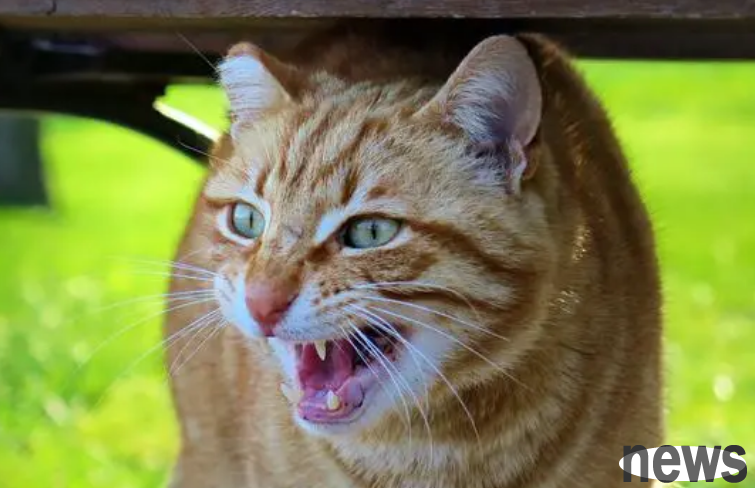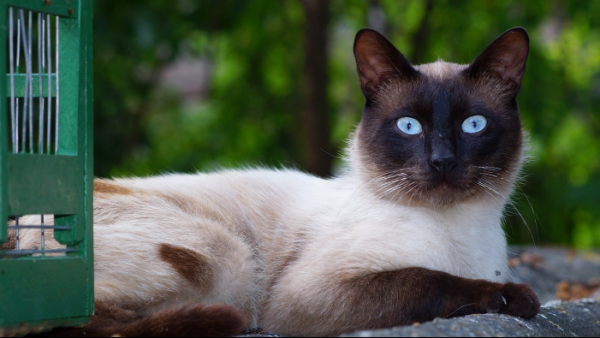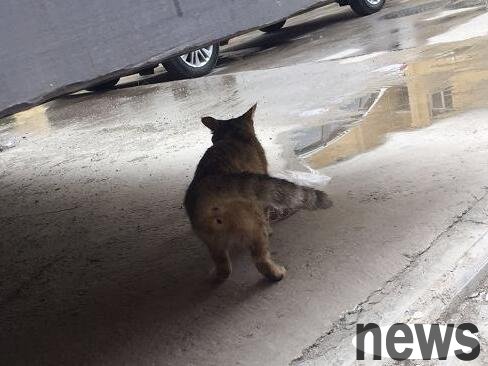What to do when encountering a cat with strong aggressiveness?
Today, let’s talk about what to do when encountering a cat with strong aggressiveness? This is really a world problem, especially when encountering a cat with a very bad personality, it makes your hands hurt. Can you only give up at this time?

① Reasons for cats to attack people
② How to prevent cats from doing aggressive behavior
③ How to correct cats to attack people
Cats actually generally do not attack humans for no reason, unless it is rabies and lose their minds. Therefore, there must be a cause for things. Even if it is for no reason from a human perspective, from a cat's perspective, there is never for no reason.
The main reasons why cats perform aggressive behavior are as follows:
1. Aggressive behavior caused by defense reactions
This may be the most common cause of cats' aggressive behavior.
When a cat feels danger and threat, its first reaction is often to escape. If there is no retreat, it will rise up to attack to protect itself. This is the instinct of any creature, and the same is true for humans.
So remember, when the cat attacks you, is it actually limited to a corner? It first retreats, retreats without any further, and shrinks in the corner, and you continue to test its bottom line, and she will definitely launch an attack at this time.
This is a defensive attack.
But it is interesting that defensive attacks can evolve into offensive attacks after the cats have repeatedly "repeated learning". Offensive attack means that when a cat attacks a person, it seems very confident. It is not that it is forced to attack when it is forced to do so, but that it is directly pounced on the owner and others to take the initiative to attack.
Why is this?
This is because the cat is a defensive attack at the beginning. When it finds that it does an attacking behavior, the person will immediately retract his hand, but it is very short-lived. Soon, the person will extend his hand again. This reaction will strengthen the cat's aggressive behavior:
Let it think that only attacks can eliminate the threat it receives. Then, extremely smart cats will develop a kind of expectation mentality, which is what we call predictions when playing games.
When a person makes a predictive prompt behavior that threatens the cat, even if you just want to reach out and touch it, in the cat's impression, this is the same action as reaching out and grabbing it, and it will immediately be recognized as a threat signal by the cat, so it will attack before you make the next action.
This is the transformation from a defensive attack to an offensive attack.
2. Attacks caused by misleading play/hunting/seeking attention
This type of attack is very related to the master's teaching.
is manifested as a cat who performs inappropriate hunting attacks on the owner's hands and feet, and always wants to bite your hands and feet, or even gets ambushed, suddenly rushing up and bite it lightly and severely, and then run away quickly.
Why is this?
This is all for the master. When a cat was a child, it was a cat's nature to learn to hunt. Kittens would practice hunting on moving objects, which is a "game". The owner often can't help but tease the little cat with his hands and feet, and it can't help but treat your hands and feet as prey in the game. If the owner fails to take appropriate actions.
Then when the kitten grows into a big cat and still maintains this "game", the owner will feel very annoyed and will be injured. At this time, the owner may beat and scold the cat and punish it.
But for cats, this is very confusing. It was obviously allowed when they were young, but they were not allowed when they grew up. The cats would have emotional conflicts. On the one hand, biting the owner can attract the owner's attention and have been engraved in memory. On the other hand, the result of the owner's punishment will cause anxiety.
So at this time, the cat's aggressive behavior may become: the cat rushes out and bites, then runs away to avoid punishment, then rushes out again, and then hides...
3. Attack behavior caused by frustration.
can actually be regarded as a metastatic attack sometimes.
Like humans, cats actually have emotions, and they are quite emotional. Sometimes, due to various reasons, it may cause depression or unhappiness. The angry cat will ignite at a moment, and you happen to be the unlucky guy who triggers the fuse.
For example: When a cat is just scolded by a master in the family, he is very depressed, and you go to sow people, think you are self-righteous and comfort her, and then you are beaten.
4. Aggression caused by discomfort.
When the cat is very uncomfortable or feels pain, and you have done behavior that aggravates the cat's discomfort, the cat may engage in aggressive behavior.
How to prevent cats from aggressive behavior

1. Preventing aggressive behaviors caused by defensive reactions
is actually to prevent cats from aggressive behaviors caused by fear or anxiety.
When you take the cat home, if the former owner does not socialize the cat well, which leads to the cat being timid and afraid of people, then we should deal with the first impression more carefully.
① Don’t force contact, let the cat choose whether to get close to people by themselves: leave enough private space for the cat, and build a place for the cat to hide: for example, the bottom of the sofa, a deep side carton, etc.
② Keep enough patience, take good care of food, drink, defecation and urination, and let the cat slowly remove its guard against you, so that it can slowly realize that you are a good person.
③ Perform desensitization and anti-conditioning reflex procedures. (I will explain in detail in the correction section below)
2. Preventing attacks caused by misleading play/hunting/seeking attention
is very simple!
First: Don't play with a certain part of your body, even if you move your feet in the quilt to tease the cat.
Second: Use toys to play with kittens, and it is best to have a certain distance from the body..
Third: When the kitten jumps to your feet or hands, do not react, draw the cat's attention away, and then walk away while the cat is not paying attention and ignore it.
3. Prevent attacks related to frustration
In fact, this kind of attack behavior is difficult for the owner to predict, but this kind of attack behavior is also relatively rare.
If the cat can control the environment it is in, the cat will remain calm and will rarely feel bad.
So we need to ensure that the cat has multiple venting channels to express its natural behavioral needs: such as places where the claws are sharpened, places where the mountain is high and the distance is high, places where you can sleep comfortably, etc.
How to correct cat aggressive behaviors? The causes of the aggressive behaviors are different. In fact, the correction methods used will also be different. The following is a detailed explanation of the corrective methods for the first aggressive behavior.
1. Correcting attacks caused by defensive responses
The main purpose of treating this fear-related attack is to let the cat know that people will not pose a threat to them. That is to build trust.
What we need to do is desensitize and combat conditioned reflexes:
① Don’t get close to the cat when it is not a threat.
② After a period of familiarity, the cat may be slightly more careful about you. You can try to shorten your distance, such as getting closer to do your own thing (not letting you get closer to touch her)
③ If the cat becomes interested in you and takes the initiative to get closer, you can prepare some snacks or games as a positive reward.
④ If the cat comes over to play or snacks without hesitation, then you can improve your contact level, reach out to the cat, start gently touching the cat, and then give a snack reward.
Note: Once the cat feels anxious about contact, the owner should stop interacting immediately and reduce the interaction level to the level that the cat can tolerate. Four words: gradual progress.




